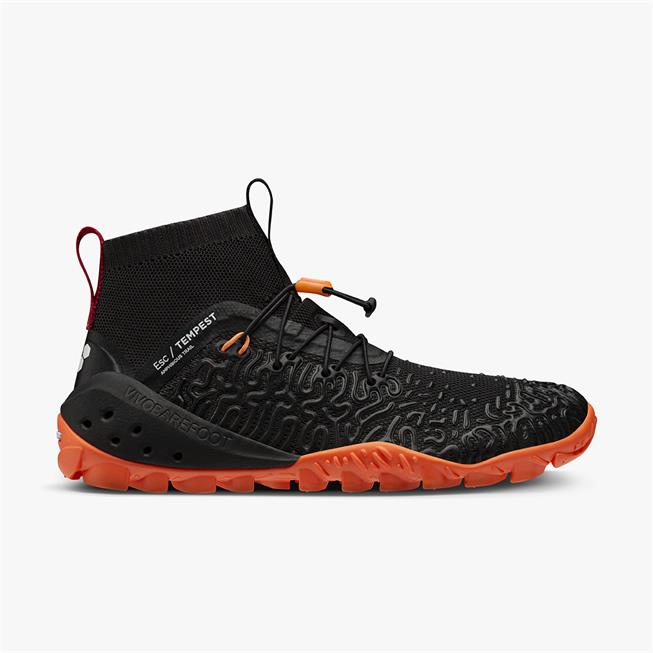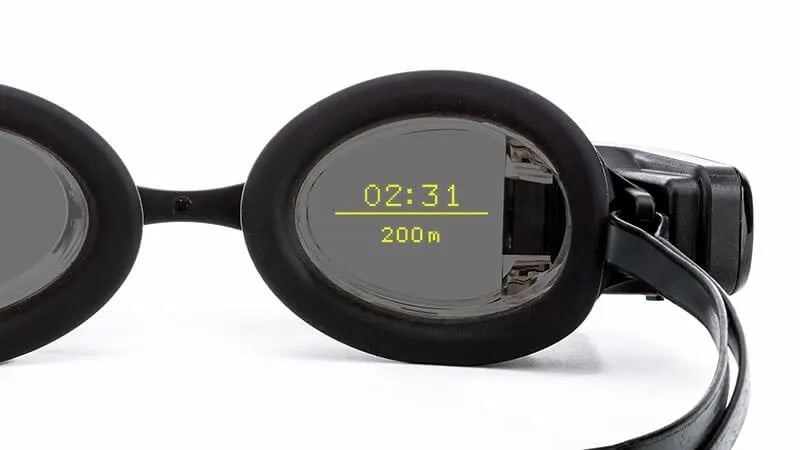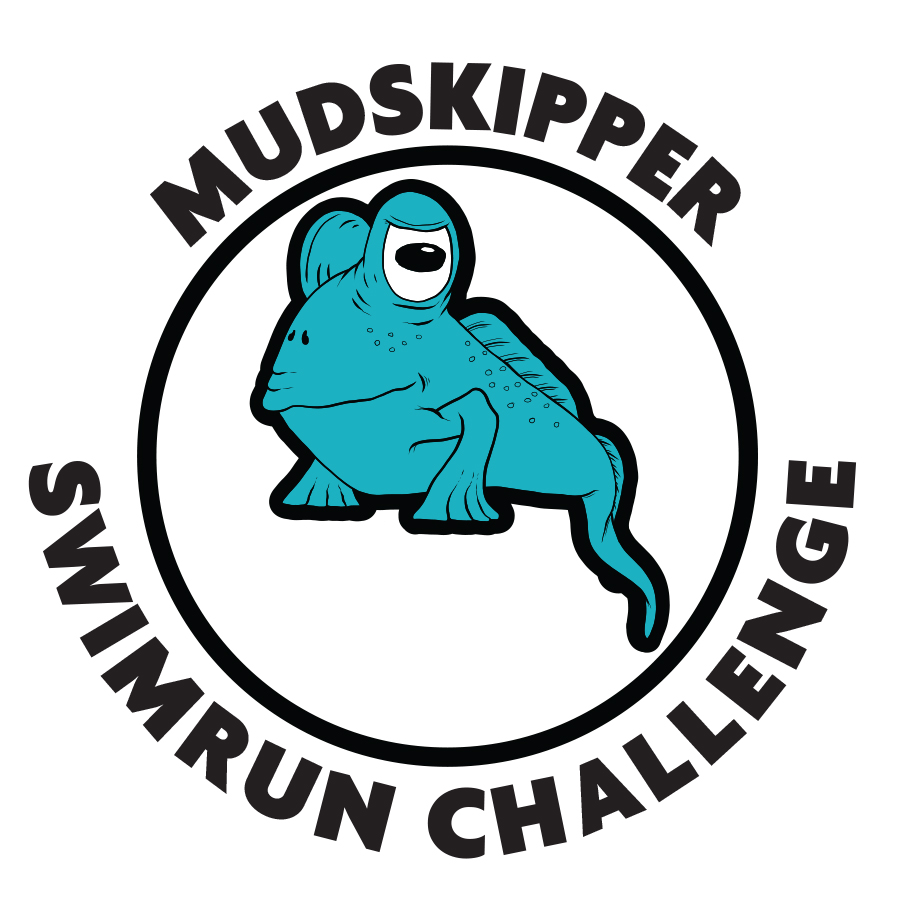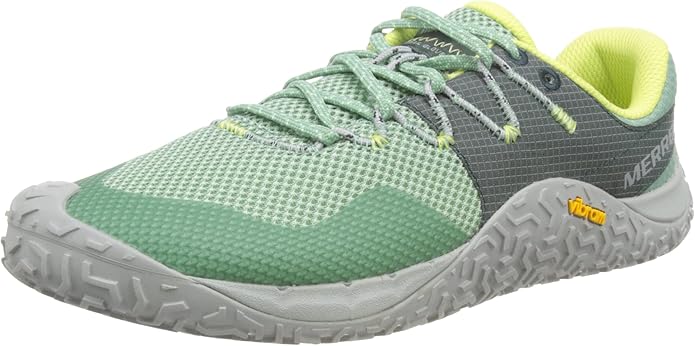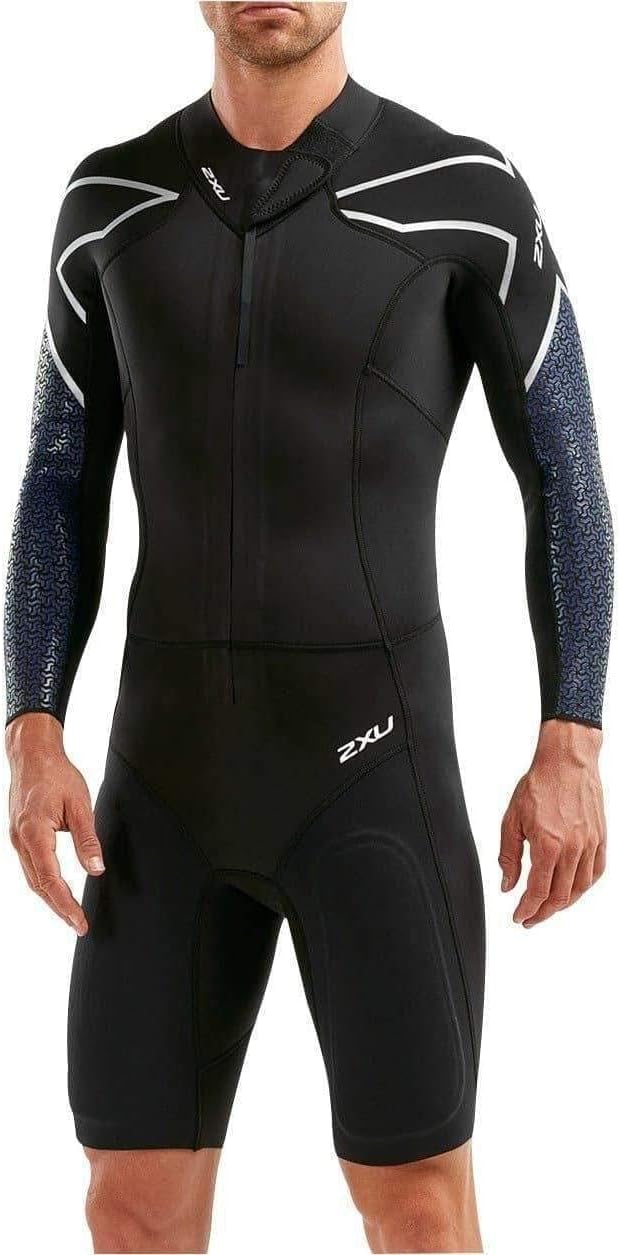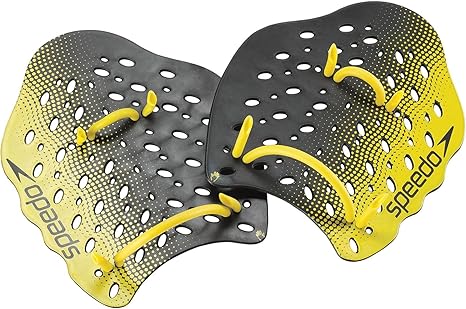Swimrun FAQ
By Richard Mitchell and Mogsy Ford
Updated November 2025
Our Swimrun FAQ answers your most important questions - the ones we are asked time and again. Get your answers quickly, right here!
(As Amazon associates, we earn a small commission on any sales.)
Swimrun FAQ
Q. What is "Swimrun"?
A. Swimrun is a sport that involves running and swimming in alternate sections without changing any gear or clothing - you run in your wetsuit and keep your shoes on during the swims! There are NO gear-change transitions, as in triathlon. Read more at our page What Is Swimrun!
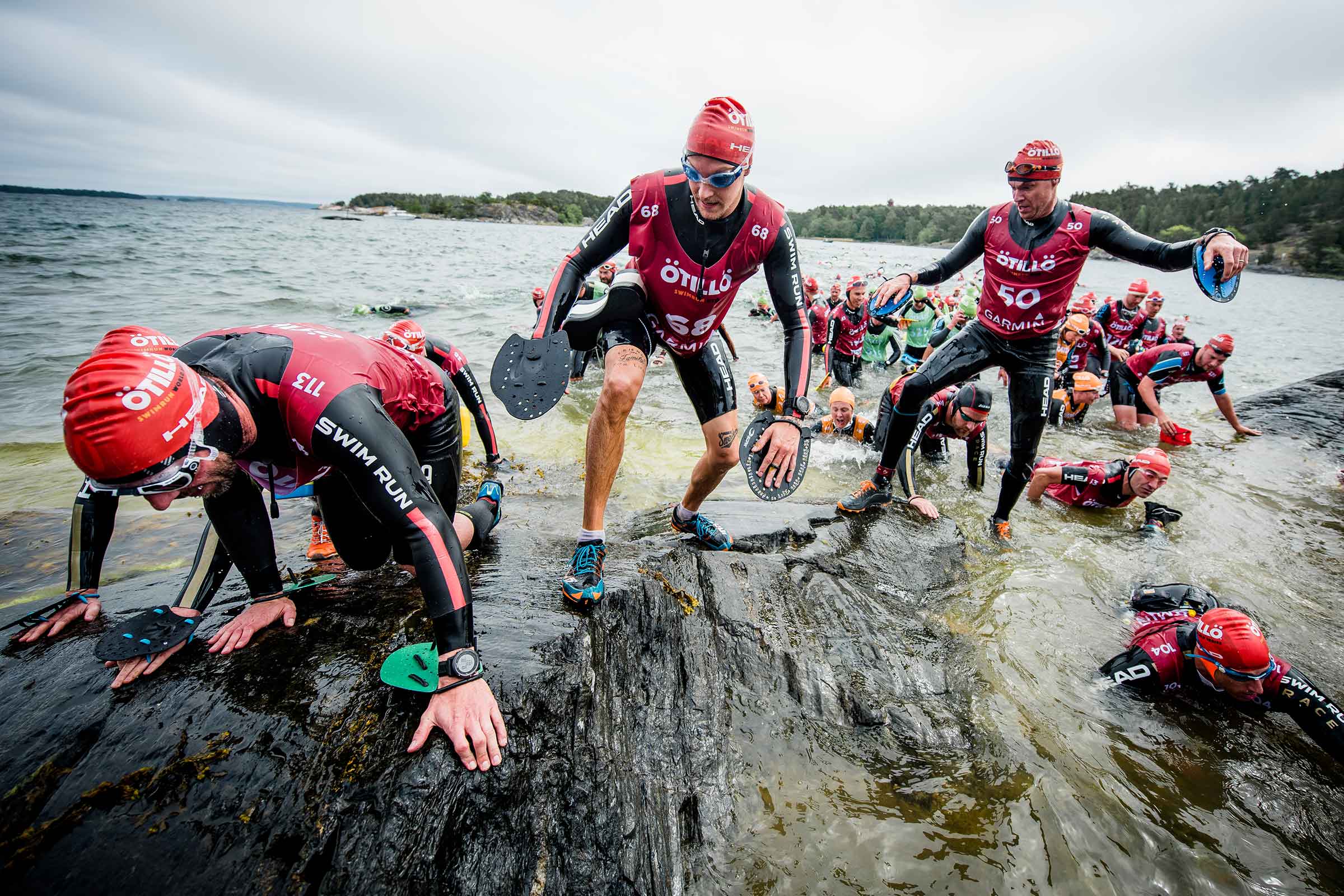 A swimrun water exit over rocks
A swimrun water exit over rocksQ. How can I find out about swimrun events?
A. You can find out about swimrun events by searching our directory By Country, or by looking at our Race calendars - one for events in Europe 2026 and one for the USA and Rest Of World 2026.
Q. What should I wear for a swimrun?
A. Most people will wear a wetsuit with a swimming costume underneath. Some people wear a tri-suit. It depends on the water temperature on the day of the race, so be sure to check the event organiser's information.
For ladies, there is a dedicated range of sports bras and briefs from Swiss company Swijin.
Q. What is a swimrun-specific wetsuit?
A. A swimrun-specific wetsuit has several features that make it more comfortable and efficient for swimming AND running; The legs are usually trimmed just above the knee, so that the neoprene does not interfere with your knee while running.
Many swimrun wetsuits will have both front and rear zips, a sturdy loop for attaching a tether or tow rope, and thicker neoprene over the thighs for extra buoyancy, with thinner more flexible neoprene around the shoulders. Some will have internal or external pockets.
For more information go to our swimrun wetsuit page.
Q. What equipment do I need?
A. This depends on the exact event, but the minimum would include trail shoes that drain well, socks, a wetsuit, swimming goggles, swim paddles, and a pull buoy.
For more information go to our swimrun equipment page.
Q. What equipment is mandatory?
A. For most events, you will need to carry a whistle and a waterproof bandage kit. Some events used to list a compass, too, but this is becoming less common.
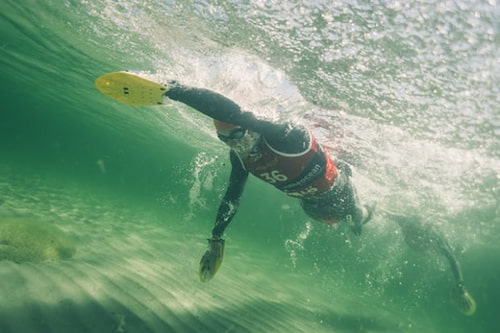 Approaching the shore!
Approaching the shore!Q. Do you wear socks?
A. Yes. Running in wet shoes can cause blisters quite quickly, so good-quality socks (like Gococo or Monkey Sox) are essential, unless you are wearing shoes like the VivoBarefoot.
For more information, go to our swimrun socks page.
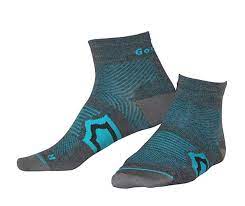 Gococo short socks
Gococo short socksQ. Do I have to be a good swimmer?
A. The short answer is "Yes". Ideally, you should be able to swim 2000 metres in one go, in under an hour, for a long distance race. For an Experience or Sprint race, you should be able to swim 500 metres in 15 minutes.
Ideally, your overall pace should be faster than 2 minutes per 100 metres.
If you are worried about the swimming part, look for races with a low swim to run ratio, say, 10% of the total distance is swimming and 90% of the total distance is running. Most races will have a swim to run ratio of 15% to 20% swimming.
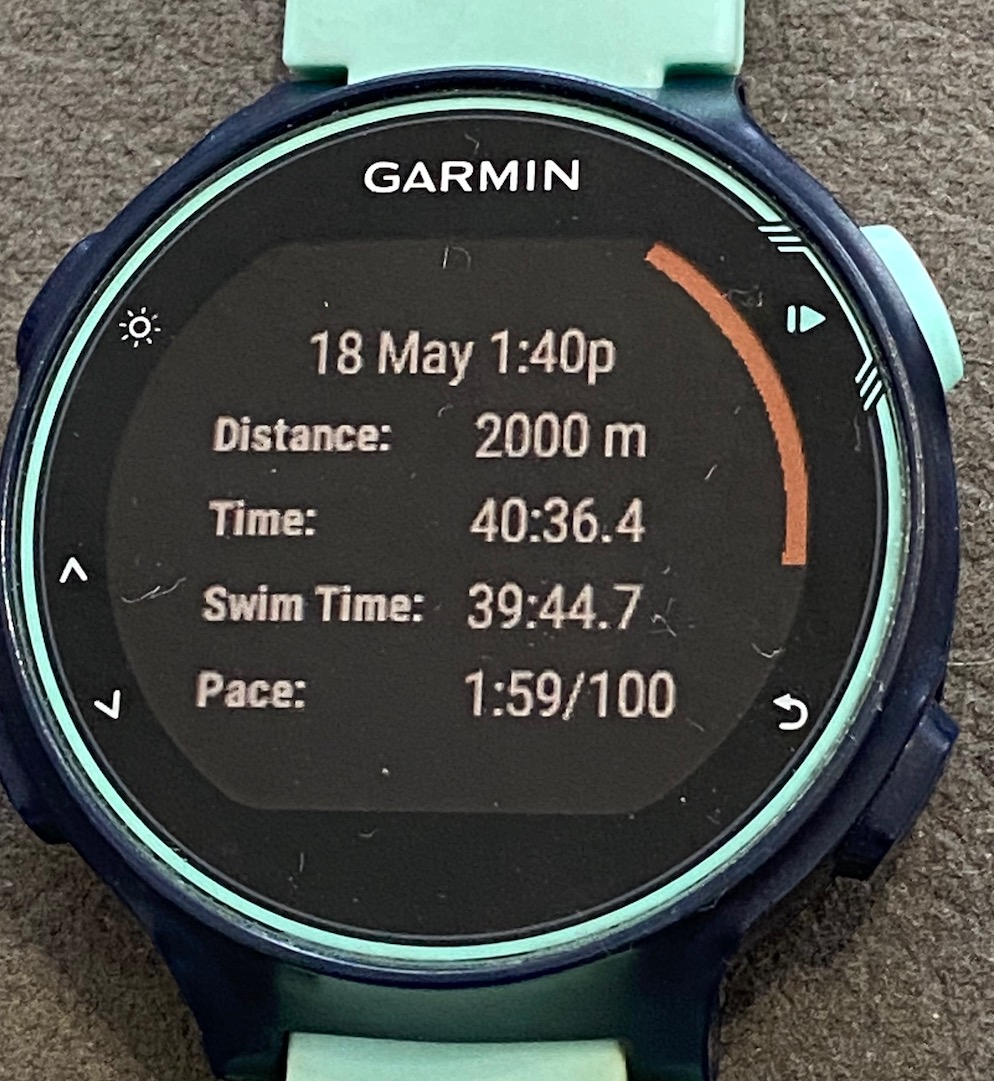 2000 metres in well under an hour
2000 metres in well under an hourQ. How do I train for a swimrun event?
A. You need to train in 3 modes;
- pool swimming,
- road and trail running,
- and then open-water swimming in your wetsuit with trail-running in your wetsuit, practicing entries and exits over sand, shingle, stones and rocks.
For more information go to our swimrun training page.
Q. Do you swim wearing running shoes?
A. Yes! You keep your shoes on for the entire race. Sometimes you can drill a few small holes through the soles, to allow water to drain more quickly, but they must be small to keep grit out.
For more information go to our swimrun shoes page.
Q. Do you run in a wetsuit?
A. Yes! You keep your wetsuit on the the entire race, although you can unzip the top to allow a bit more movement, or even pull the top down for longer running sections (also called 'cab down').
In some warmer-water events (like Italy and Tahiti) you wear a triathlon suit, not a wetsuit.
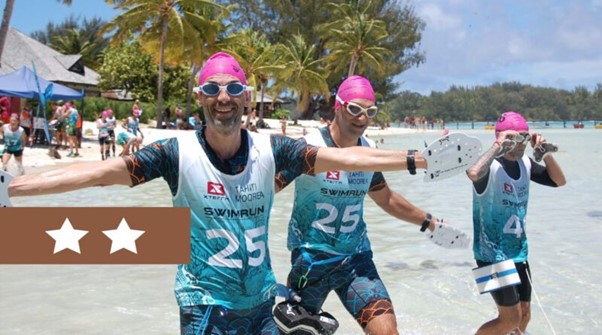 Swimrun Moorea start
Swimrun Moorea startQ. How hard is a swimrun event?
A. Harder than you might think. The swim sections are usually in cold water, and sometimes through choppy water. And then you have to run with a wetsuit full of water. The combined effects of resistance from the neoprene and extra weight make running a challenge, and fatigue builds quite quickly.
For more information go to our first swimrun event page.
Swimrun FAQ
Q. How far is a swimrun event?
A. This depends on the event; the shortest races are usually under 10km in total. Middle-distance events cover 12 to 20km total, and the full-distance events are typically 30 to 40km, although some are much longer. The swimming legs usually take up 10% to 20% of the total distance.
You can see a list of events by distance at our pages on events
Q. How long does a swimrun race last?
A. The 'Intro' or 'Experience' events usually take under an hour to complete. The 'Sprint' distance events typically take 2 to 3 hours. Full-distance races usually take 4 to 6 hours, although many are longer.
If you are up for a challenge, have a look at our page on the toughest swimrun races!
Q. How do you carry a pull buoy on the running sections?
A. Some people attach the pull buoy to the back of their race belt; you can also pull it round to the outside of your thigh with a loop of elastic cord to hold it in place.
For more information go to our swimrun pull buoy page.
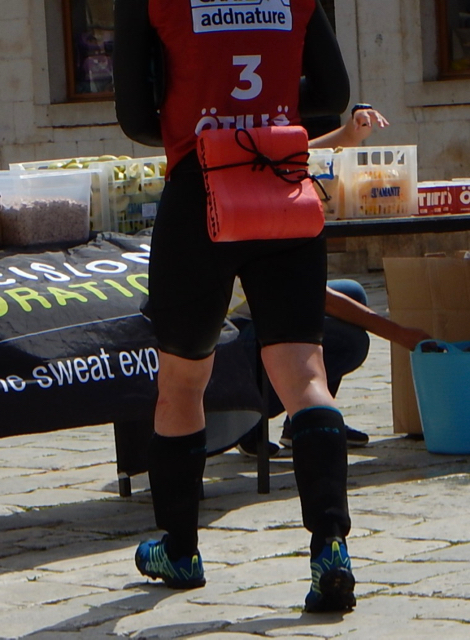
Q. What do I wear under the wetsuit?
A. Most people will wear a swimming costume or a tri-suit under their wetsuit. It depends on personal preference and water temperature.
For women, there is a great option by Swiss company Swijin. You can read about your options at our Swijin page.
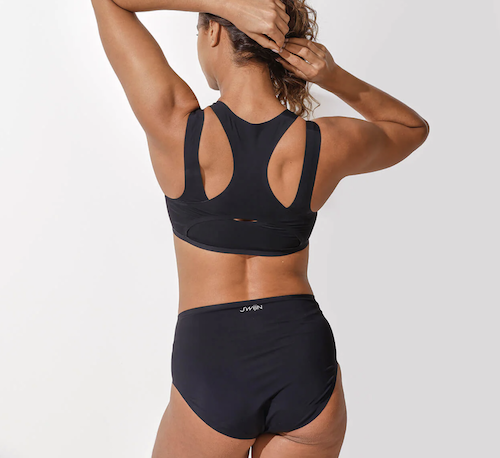 Swijin sports underwear for women
Swijin sports underwear for womenQ. Do I really need hand paddles?
A. It's not essential, but most people will use hand paddles. For first-timers it's not so important - I wore webbed neoprene gloves for my first event. However, hand paddles definitely have an advantage, but you MUST train with them!
For more information go to our swimrun paddles page, and find out why the most expensive paddles are actually deeply flawed! The designers have ignored (or are unaware of) the scientific research into the optimal shape and size of swim paddles. We reveal all!
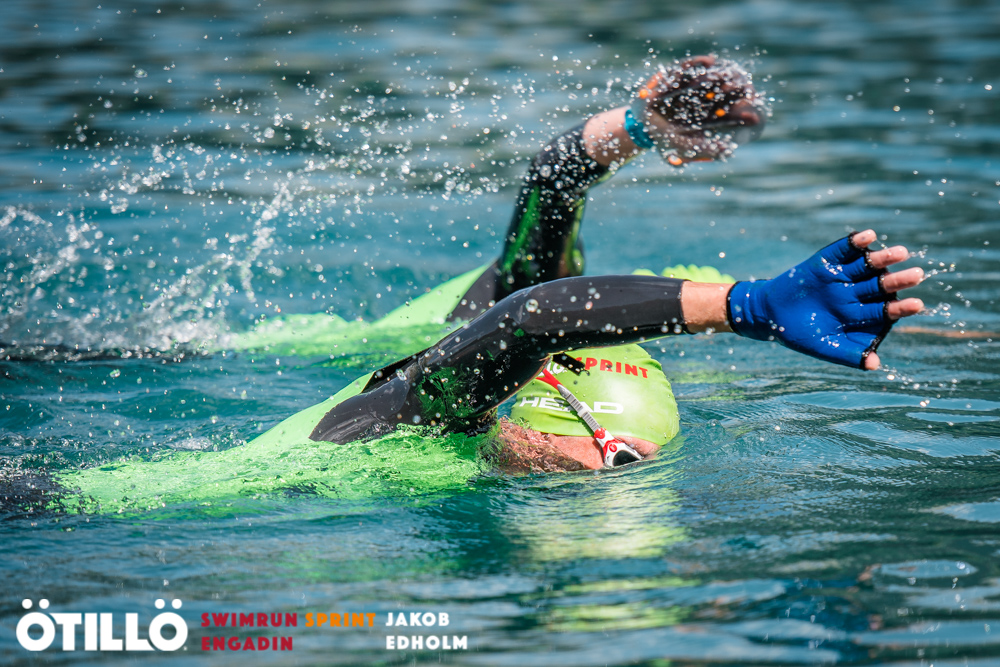 Blue webbed neoprene gloves
Blue webbed neoprene glovesQ. What do I do with my swim hat and goggles on the running section?
A. You can just carry them in your hand, or you can unzip the front of your wetsuit a little and stuff your hat and goggles inside. Your swim paddles can be clipped into a carabiner on the back of your belt.
Q. What do I do with prescription glasses on the swim legs?
A. You can cut the pouch from a running belt and sew it into the back of your swimrun belt, and put your glasses in there. Obviously, they will get wet!
Swimrun FAQ
Q. What's the hardest thing about swimrun?
A. Running in a wetsuit, scrambling over rocks at swim entries and exits, and dealing with 'Nature' - cold water, muddy conditions, swimming through seaweed, etc.
In longer events, the hardest thing is dealing with cold water, and the sheer endurance aspect of a 5 or 6 hour race.
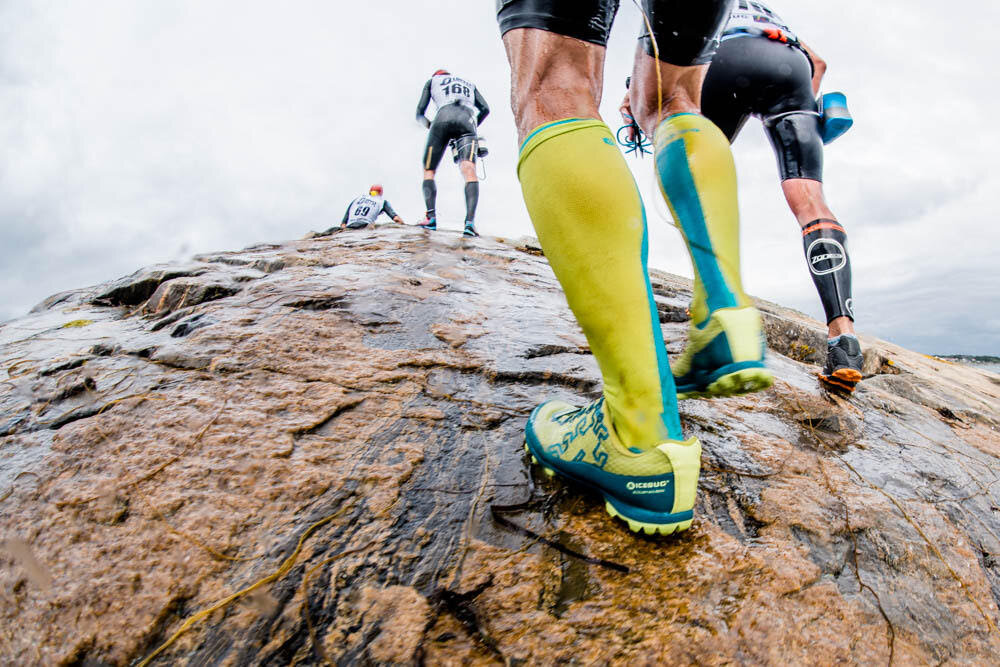 Climbing out of a swim
Climbing out of a swimQ. Do you get a medal at a swimrun race?
A. For most events, yes, but not Ötillö, unless you actually win! Check the information page for the event you are considering.
Q. What is the best event for a first-timer?
A. An 'Experience' or 'Intro' event, of under 10km. And, if you are not a good swimmer, look for a low swim to run ratio. But don't worry about the swimming too much, I have seen people doing breast stroke and back stroke at swim run events!
Q. Do I have to compete as a team, or can I go solo?
A. The original idea behind swimrun was to compete as a team of 2, for safety reasons, but many events now allow solo competitors for the short and sprint distances. Some full-distance events offer solo entries, but most are still 'teams only', as far as I know.
Q. Is it mandatory to use a tow-rope or tether between team members?
A. No, it is not mandatory, but most teams will use one during the swim legs if one member is a stronger swimmer. Some teams will also keep the tether attached for the run sections, too.
Read more about the tether / tow rope at our dedicated page.
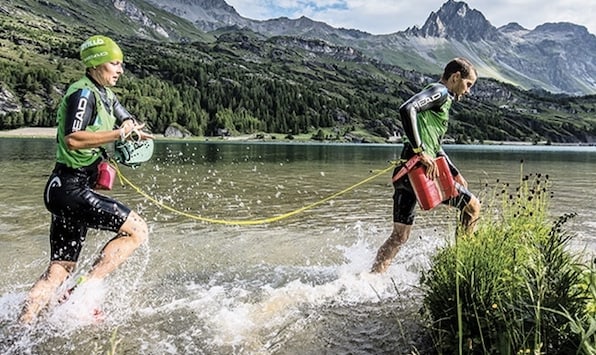 Swimrun tether
Swimrun tetherQ. Can I use flippers?
A. Some events allow this, with a limit on the length of 15cm from your toe to flipper tip. But they are big to carry when running, and not many people use them. Some events may ban them, so check the event regulations.
Q. Are there any age restrictions or medical requirements?
A. There is a minimum age restriction of 14 to 15 (Australia), and usually 18 for most other events. There is no maximum age limit. Some countries like France and Italy require a medical certificate.
Again, check your event regulations to be sure!
We hope this page on swimrun FAQ is useful. If you think we have missed something, please let us know by using the Contact Us link. Thank you!
Monitor your activity and performance while you are swimming with the
CLICK HERE for further details and the BEST PRICE at Amazon!
www.swimrun-advice.com works with the following Swimrun companies:

